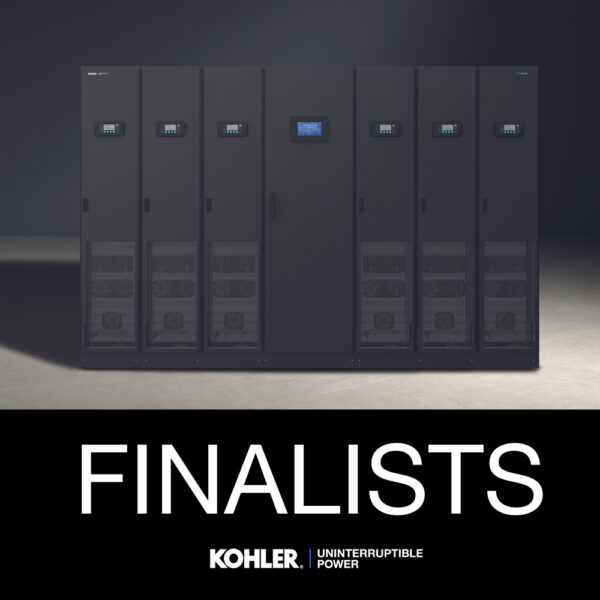As innovative applications such as big data and IoT increasingly become the bedrock of global business operations, the need for data centre power protection has never been more critical. Although the effects of downtime vary from industry to industry, in extreme cases, a single outage can translate to millions of dollars of lost revenue.
There are a number of devices that today’s data centres rely on for power protection, but chief among them are uninterruptible power supplies (UPS). UPS serve two essential functions. First, to help protect ICT equipment from power abnormalities on the main supply, and if the mains supply fails, to step in and support the critical load until the mains is restored or replaced by an alternative supply such as generator. By ensuring continuous power supply, UPS help eliminate the danger of costly power outages.
UPS come in two architectural varieties: static and rotary. The former derives its name from the fact that there are no moving parts throughout its power path (static UPS rely on chemically stored battery power in the event of downtime). Rotary UPS, as you might have guessed, utilise rotating components to transfer power to the load. As rotary UPS have low redundancy (10-15s), in data centre environments, they are typically coupled with a diesel generator (DRUPS) to provide the necessary redundancy.
Pros and cons
For data centre applications, static UPS provide numerous benefits over their rotary cousins. First, as rotary UPS contain more mechanical components, they are significantly heavier beasts. A 1MVA static UPS weighs in at around roughly two tonnes while a DRUPS equivalent weighs close to 25. Hence static UPS provide greater location and transportation flexibility throughout their life cycle, take up significantly less space, and require fewer human resources to install. You can’t place 25 tonnes on or outside a building without employing dedicated civil and structural engineers.
When it comes to maintenance, their comparatively diminutive form-factor also means planned and unplanned maintenance is less invasive, this translates to reduced disruption, potentially less costs and greater uptime. And as rotary UPS’ mechanical equipment requires a lot of manufacturing resources, they are a far greater burden on capital expenditure, and much costlier to replace. In terms of capex, the only real benefit of rotary UPS’ (assuming it is a DRUPS system without any batteries) is that you don’t have to swap out the batteries every 4-10 years as you have to with statics.
Static UPS’ also offer greater energy efficiencies. In double conversion mode (where the critical load is fully supported at all times) the most efficient modular static UPS on the market, fitted with latest energy saving features, are capable of up to 97.4 percent efficiencies, compared to around 92-95 percent in the case of DRUPS. While the difference does not look vast on the surface, applied to a sizable system this translates into significantly reduced electricity and cooling costs.
Game set and match
All these benefits combined lead to a far smaller TCO for static UPS. Despite these numerous advantages, a diminishing number of facilities still opt for DRUPS for power protection, this continues to decline year on year. .
Those reticent to make the switch tend to be traditional companies unaware of recent advances made in static UPS design. When statics first entered the fray, they lost to rotarys on almost all of the KPIs discussed above, but times have changed. Newer more efficient UPS systems mean that static UPS should be the go-to option for today’s data centre.
Making the switch
While the decision to switch might be easy once the respective merits are considered, replacing a DRUPS while protecting critical load is no simple feat: it requires significant technical and logistical planning, involves an array of stakeholders and, in some circumstances, staged milestones over a period of time, to best suit any site restrictions and specific requirements. To ensure the process is as non-disruptive and invasive as possible, operators must have several considerations at the forefront of their minds.
The first step is to identify the right static for your individual needs. It is crucial to bear in mind present load requirements and how they might change in the future. These need to be compared to current space constraints and future space availability, so a UPS vendor can provide a solution that is future proof and scalable. The vendor should have a range of products available, to ensure the best solution is selected to meet the requirements both on day one and going forward.
Once a solution is identified, a thorough planning process needs to be drawn up. It goes without saying that a key consideration here is power protection throughout the project. Operators need to work with a supplier to identify the best temporary system to support the critical load during the project, as well as its optimum location and integration. Part of the planning process would include assessing possible fuel removal, with the storage tanks and fuel lines; exhaust and attenuation changes/removal.
Another vital logistical consideration is the safe removal of the existing DRUPS itself. Different sized DRUPS call for different lifting methods. For instance, some may necessitate removal via a large crane, which, in turn, might demand a road closure. If the DRUPS is both sizeable and hard to access, it may also have to be dismantled before it can be safely removed from the site. The trickiest of replacements require buy-in from numerous stakeholders, including landlords, local authorities and various specialist contractors.
Further to logistical and technical considerations, due to the expensive and sensitive nature of the project, the stakes are high. Consequently, operators must be meticulous when choosing suppliers. Key traits to look out for are availability and flexibility. Even if a static UPS has been installed with no downtime, if your chosen supplier can’t offer full-service support across the whole country, in the event of any issues, operators can find themselves at risk of downtime.
In terms of flexibility, its essential suppliers show a readiness to accommodate an operator’s unique requirements throughout design and implementation. As discussed above, no two replacement projects are the same, so ensure suppliers are always considerate of individual requirements, don’t rush any steps, and are sincere in their willingness to learn about your site.
When researching suppliers, you are primarily targeting provenance and pedigree. There are several ways to evaluate a supplier, research and get the most from initial pitch meetings. Only work with suppliers who are financially stable, often indicated by creditworthiness, via their published certified accounts. While static UPS’ can last up to 15 years, if your supplier is not reliable and has the potential to no longer be around, that technical lifespan counts for nothing.
Equally as important is that a supplier has a strong track record of completing similar projects. If they haven’t already provided it, ask them for their customer base and then talk to those clients directly to learn about their experiences. Also, observe their reaction when you request for their accident statistics, staff turnover rate and accreditation certificates. Sometimes it’s all about asking the right questions.
Conclusion
Compared to DRUPS, today’s static UPS boast higher efficiencies, occupy less space, weight, and are far more scalable. While they may be the right choice for today’s data centre power protection needs, replacing existing DRUPS is a complex, high-stakes procedure that needs to be undertaken with caution and in a measured fashion. By being aware of all steps of the process and the ways in which reliable suppliers can be identified, operators can ensure replacement is completed with minimal disruption and headaches, and that their business can depend on their infrastructure to power their innovative applications of the future.




